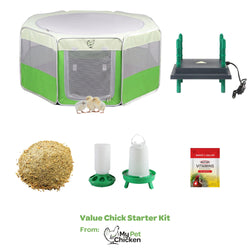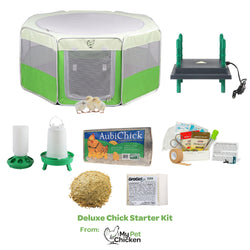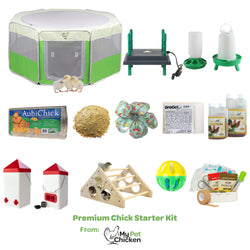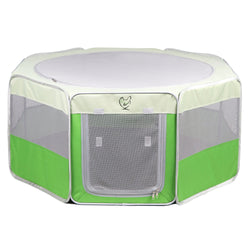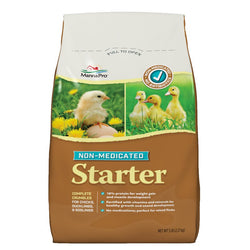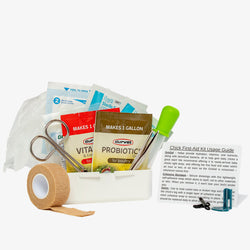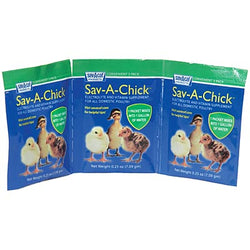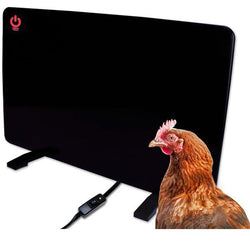All about Fowl Pox (Wet) disease
Back to blog
Imagine having chicken pox in your mouth and throat! Though the virus that causes wet fowl pox is different from the one that causes chicken pox in humans, the symptoms appear similar--just inside the bird's mouth and throat rather than on the skin. The poor birds that get this disease must feel miserable! Thankfully, you can take practical steps to help protect your flock from getting this virus. Read on to find out more.
Fowl Pox (Wet) Also called
Fowl Diphtheria, diphtheritic pox, ILT
Prevalence
Common, but less so than Dry Pox
Signs
General signs -
Scabby bumps on face, eyes.
Cardinal or diagnostic signs -
Pox inside mouth and throat. Mortality runs at 50% or so for adult birds, which is significantly higher than dry pox
Cause/s
Avipoxvirus. This is the same family of viruses that causes dry pox, however in the case of wet pox, it invades the windpipe/trachea.
Communicability
Very communicable, but spreads slowly via blood from scratches, wounds or other injuries. Also spread by mosquitoes and mites, in which case the spread may be quick. Passes from hen to chick in the egg.

Wet pox can appear on comb and skin, as well as inside the throat and trachea.
Communicability to humans
No, humans cannot be infected with this virus. (Pox in humans is caused by a different virus.) However, you can carry the virus to your birds on shoes or equipment, so be sure to thoroughly wash and sanitize hands after handling birds or equipment, and be sure to sanitize equipment.
Incubation period
4 to 14 days
Latent
Occasionally, some birds can become carriers and shed the virus during times of stress
Endemic
Yes, but especially common in flocks crowded into small areas, such as large commercial flocks or small pet flocks staying in the coop during winter.
Home treatment and/or prevention
Prevention: Vaccinate. Practice good biosecurity. Quarantine any birds showing signs of respiratory infection.
Treatment: None. Still, making sure the sick birds are not subject to other stressors can reduce mortality. For instance, make sure sick birds have access to an area that is sufficiently warm (or cool). If scabs interfere with eating and drinking make sure to remove.
Veterinary care
A vet may prescribe antibiotics to stave off secondary infections while birds recover; however no medication exists for the fowl pox virus itself.
Recovery
Most birds who recover will do so in two to four weeks.
Other conditions, illnesses and/or diseases with similar signs:
Can be mistaken for other respiratory infections or conditions like Coryza or Laryngotracheitis.
Also consider browsing through this list of other chicken illnesses with respiratory symptoms.
Fowl Pox (Wet) Also called
Fowl Diphtheria, diphtheritic pox, ILT
Prevalence
Common, but less so than Dry Pox
Signs
General signs -
Scabby bumps on face, eyes.
Cardinal or diagnostic signs -
Pox inside mouth and throat. Mortality runs at 50% or so for adult birds, which is significantly higher than dry pox
Cause/s
Avipoxvirus. This is the same family of viruses that causes dry pox, however in the case of wet pox, it invades the windpipe/trachea.
Communicability
Very communicable, but spreads slowly via blood from scratches, wounds or other injuries. Also spread by mosquitoes and mites, in which case the spread may be quick. Passes from hen to chick in the egg.

Wet pox can appear on comb and skin, as well as inside the throat and trachea.
Communicability to humans
No, humans cannot be infected with this virus. (Pox in humans is caused by a different virus.) However, you can carry the virus to your birds on shoes or equipment, so be sure to thoroughly wash and sanitize hands after handling birds or equipment, and be sure to sanitize equipment.
Incubation period
4 to 14 days
Latent
Occasionally, some birds can become carriers and shed the virus during times of stress
Endemic
Yes, but especially common in flocks crowded into small areas, such as large commercial flocks or small pet flocks staying in the coop during winter.
Home treatment and/or prevention
Prevention: Vaccinate. Practice good biosecurity. Quarantine any birds showing signs of respiratory infection.
Treatment: None. Still, making sure the sick birds are not subject to other stressors can reduce mortality. For instance, make sure sick birds have access to an area that is sufficiently warm (or cool). If scabs interfere with eating and drinking make sure to remove.
Veterinary care
A vet may prescribe antibiotics to stave off secondary infections while birds recover; however no medication exists for the fowl pox virus itself.
Recovery
Most birds who recover will do so in two to four weeks.
Other conditions, illnesses and/or diseases with similar signs:
Can be mistaken for other respiratory infections or conditions like Coryza or Laryngotracheitis.
Also consider browsing through this list of other chicken illnesses with respiratory symptoms.

